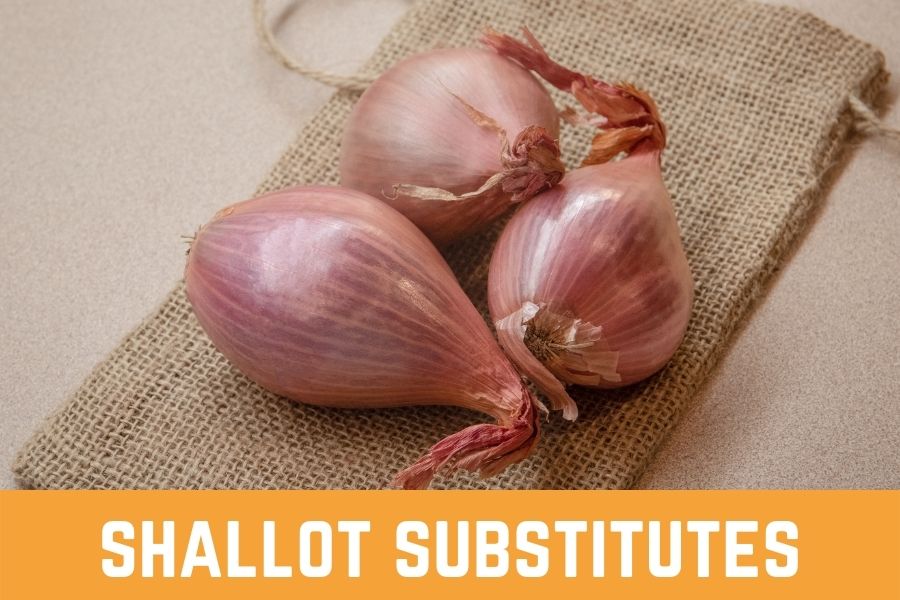Shallots are a great way to add a touch of flavor to your cooking.
But sometimes you can’t find them at your local supermarket.
Oh no! I don’t have any shallots. What should I do?
What can I use as a substitute if I want to add it?
In this article, I’ll introduce you to some of the “shallot substitutes” that can help you in such a time of need!
What is a shallot? Characteristics
The shallot is a perennial herb of the leek genus that originated in Central Asia.
It is shaped like a smaller version of an onion, and when you cut it open, the inside has the color of purple onion.
It is relatively easy to grow in a planter, making it an ideal vegetable for home gardens.
When peeled, some of them are split into pieces, which look similar to garlic.
The taste is milder and less pungent than onions, and it has an aroma similar to garlic, but not as strong.
It is sometimes sliced and eaten raw in salads, but it can also be fried.
Pickles can also be made by soaking them in vinegar.
They are also used as a topping for sandwiches and burgers and can be used to accent or remove the smell of meat.
The purple onion-like color also adds vibrancy to the dish!
6 substitutes for shallots
Shallot Substitute 1: Onions
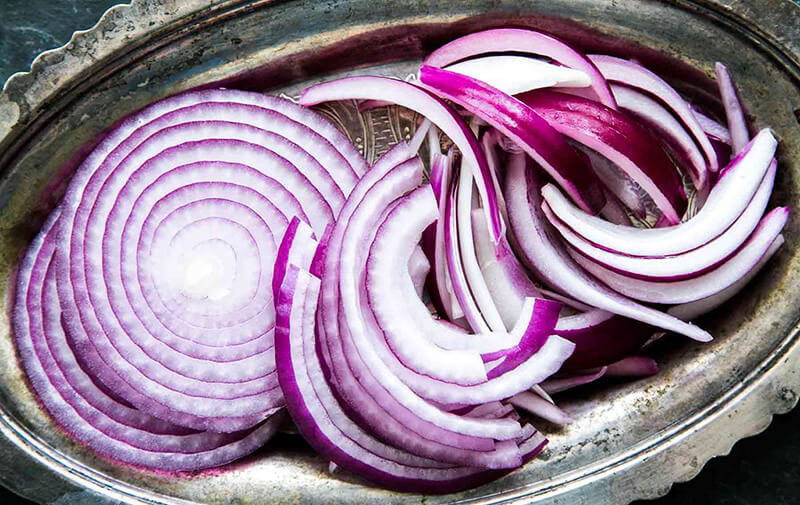
Onions are very similar in appearance to onions and can of course be used as a substitute.
If you find them too pungent when using them in salads, etc., you may want to extend the time you expose them to ice water.
Soft onions, such as fresh onions, are suitable as a substitute for eating raw, while well-dried onions are suitable for cooking overheat.
By understanding the characteristics of each type of onion and using them in different ways, you can make your food more delicious.
When used in salads, purple onions have the same effect on the appearance as shallots.
Onions can be stored for a long period, which makes them much easier to use!
Substitute for shallots 2: Rakkyo
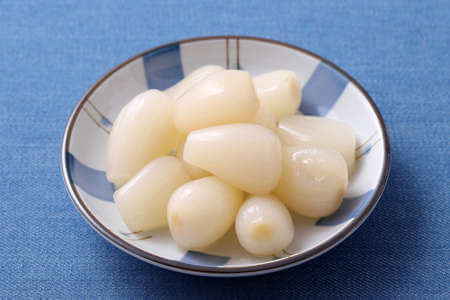
These days, pickled rakkyo is readily available at convenience stores.
You can chop them into small pieces and use them as a substitute.
However, since the pickled rakkyo has already been flavored, the number of dishes you can make with it will be limited.
The ones that have not been pickled in vinegar, but have been processed for pickling, can be purchased at supermarkets and other stores, so they do not interfere with the taste of the dish.
However, since rakkyo has a stronger flavor and aroma than shallots, to begin with, you need to adjust the amount.
You can try adding a little less, and then adjust your taste!
Substitute for shallots 3: Myoga
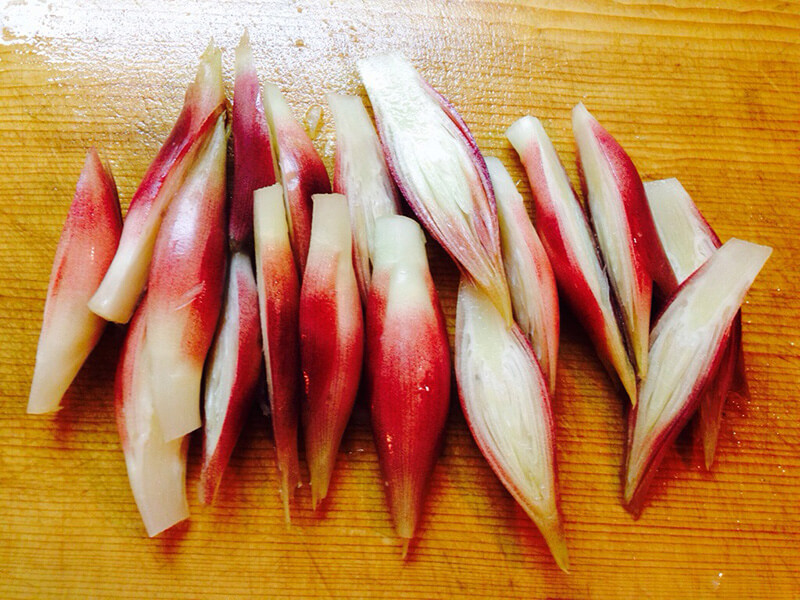
Although it has a slightly different flavor, myoga can also be used as a substitute.
It looks very similar to shallots, so it can be added to salads or used as a condiment.
It is often thought of as a rare ingredient, but it can be found in any season at larger supermarkets.
Substitute for shallots 4: Green onions
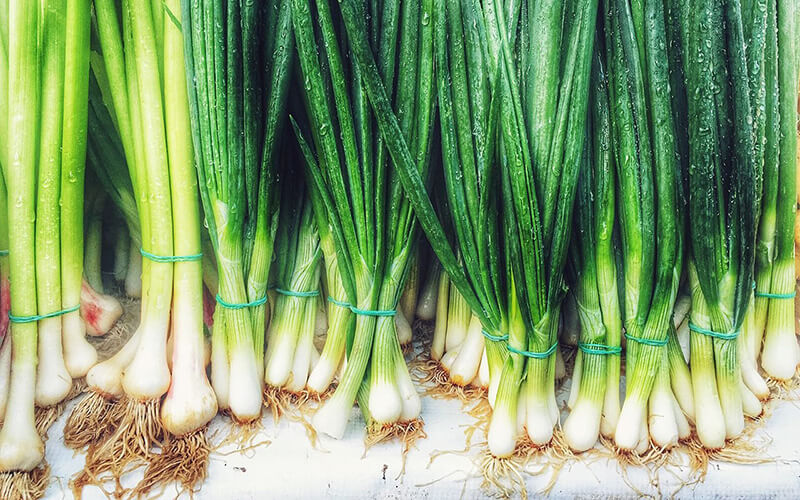
Leeks are also a good substitute for shallots.
When substituting, cut the thick white part of the leek into thin strips and dip them in iced water for a crispy texture.
It can be used in stir-fries and stews without any problem, although you may need to cut it slightly differently if you want to heat it.
It’s relatively easy to get leeks at any supermarket.
It’s a little different in terms of flavor, but depending on the dish you want to make, it’s a good enough substitute!
Substitute for shallots 5: Daikon nips

Although it is inevitably inferior in terms of aroma, you can also substitute daikon nips for the shallots if you are thinking more in terms of texture.
It is also a good substitute if you are not fond of the unique aroma of shallots.
The price of this vegetable may fluctuate a little depending on the season, but it is still relatively easy to find at any supermarket, and even at some convenience stores.
It is also available at some convenience stores. Some vegetables are already cut into small pieces for salads, so you can save time by using them.
Substitute for shallots 6: Nobile

The nobile, a well-known wild plant, is a perennial plant of the same type as the shallot.
It is a perennial herb of the same species as the shallot. The small onion-like part at the root is edible, and although the color is different, it is very similar to the shallot in appearance.
The taste is somewhere between that of a rakkyo and garlic, and the aroma is not as strong as garlic.
Rather than being suitable for fresh eating, it is recommended as a substitute for processed eating.
Since nobile is a wild plant, it is usually harvested in the spring when it is growing wild in the fields or on the banks, rather than buying it in stores.
Even in the fields and banks, there is a possibility of private property, so when harvesting, let’s check in advance whether it is possible to enter properly.
Conclusion
- The shallot is a perennial herb of the leek genus that originated in Central Asia. They are shaped like small onions and are similar in color to purple onions.
- The following six are recommended substitutes for shallots. [Onion, rakkyo, myoga, green onion, radish’s knob, and nobile].
- When growing shallots in the home garden, it is best to avoid growing them at the same time as daffodils, which look similar but can be dangerous if accidentally eaten.
- Myoga is not meant to be eaten in large quantities, so it should be considered as a substitute for garnish or condiment.
- Since nobile grows wild, it can easily be mistaken for daffodil. It is easy to mistake nobile for daffodil because it grows wild and should not be eaten at one’s discretion.
